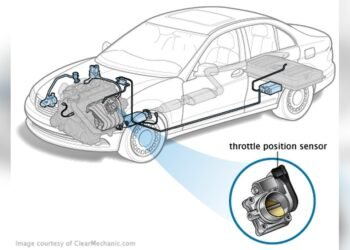It is illegal to drive without airbags in many countries due to safety regulations and guidelines for vehicle manufacturers. There are strict laws in place to protect drivers and passengers from potential injuries in the event of a collision.
Airbags are considered a vital safety feature in modern vehicles, and their absence can result in legal consequences for those who violate the law. So, it is crucial to ensure that your vehicle is equipped with functional airbags before hitting the road.
Remember, safety should always be a top priority when it comes to driving.
The Importance Of Airbags
When it comes to road safety, airbags play a crucial role in protecting drivers and passengers from severe injuries in the event of a collision. Installed in vehicles as a safety feature, airbags are designed to deploy rapidly upon impact to cushion the force and reduce the risk of serious harm. Understanding how airbags work and their purpose in vehicles is essential for every driver, as it highlights the significance of having them properly functioning in our cars.
How Do Airbags Work?
Airbags are a remarkable feat of engineering that relies on a clever combination of sensors and inflatable materials. When a vehicle experiences a sudden deceleration caused by a collision, the sensors detect the change in speed and trigger a signal to the airbag module. This signal activates an igniter, which produces a controlled explosion to fill the airbag with gas from a chemical propellant.
As the airbag inflates, it rapidly expands toward the vehicle occupants, creating a protective barrier between them and the hard surfaces of the car’s interior. The primary purpose of this inflated airbag is to absorb the energy generated by the collision and distribute it evenly through its fabric, reducing the impact on the driver and passengers.
Once the airbag has done its job, it then deflates to prevent further injury. It is important to note that airbags are designed to work in tandem with seat belts. The combination of these safety features offers the best protection in the event of an accident.
The Purpose Of Airbags In Vehicles
The purpose of airbags in vehicles is simple yet critical – they are designed to save lives. In a crash, airbags provide a protective cushion that reduces the likelihood of drivers and passengers suffering life-threatening injuries. According to studies, airbags have proven to be highly effective in mitigating the severity of head, neck, and chest injuries during a collision.
The use of airbags can greatly decrease the risk of fatality and serious harm. Research has shown that when used in conjunction with seat belts, airbags reduce the risk of fatal injuries to the driver by 52% and to the front-seat passenger by 29%. These statistics highlight the importance of having airbags in our vehicles, as they significantly contribute to reducing the impact of a crash on human lives.
Moreover, the presence of airbags also aids in the prevention of secondary injuries. By absorbing the energy created by a collision, airbags cushion the impact and reduce the chance of passengers being thrown against hard surfaces or being ejected from the vehicle.
Ultimately, the importance of airbags can never be overstated. They are a powerful safety feature that can make a life-saving difference in the event of an accident. Therefore, it is crucial to ensure that airbags are regularly inspected, maintained, and replaced as necessary to guarantee their optimal functionality.

Legal Requirements For Airbags
Driving without airbags may be illegal in some jurisdictions due to legal requirements. It is crucial to understand and comply with the specific regulations in your area to ensure safety and avoid potential penalties. Check with your local authorities or consult a legal expert for accurate information.
Laws On Airbags In Different Countries
In order to ensure the safety of drivers and passengers, several countries around the world have established laws regarding the use of airbags in vehicles. These laws vary from country to country, with each nation implementing its own regulations to protect the well-being of individuals on the road.
Let’s take a look at some of the laws on airbags in different countries:
| Country | Airbag Regulations |
|---|---|
| United States | In the United States, it is mandatory for all new passenger vehicles, including cars, trucks, and vans, to have frontal airbags for both the driver and front-seat passenger. This requirement was introduced in the 1990s as a measure to reduce injuries and fatalities resulting from vehicle collisions. |
| United Kingdom | In the United Kingdom, the law mandates that all new passenger cars must be equipped with frontal airbags for the driver and front-seat passenger. Additionally, certain types of commercial vehicles, such as buses and goods vehicles, may also require airbags based on their specific use and weight. |
| Germany | Germany, like many other European countries, follows the European Union’s regulations on airbags. These regulations require all new passenger vehicles to have frontal airbags for the driver and front-seat passenger. Moreover, side airbags have become increasingly common in German vehicles due to their effectiveness in protecting occupants during side-impact collisions. |
Airbag Requirements By Vehicle Type
Airbag requirements not only vary by country but also depend on the type of vehicle. Here are some airbag requirements by vehicle type:
- Passenger Cars: In most countries, passenger cars are required to have frontal airbags for the driver and front-seat passenger. Some countries may also mandate additional airbags, such as side airbags, to provide enhanced protection during crashes.
- Commercial Vehicles: Regulations for airbags in commercial vehicles, including trucks, buses, and vans, can vary. Often, the requirements are determined based on the vehicle’s weight and intended use.
- Motorcycles: While motorcycles typically do not come equipped with airbags, some manufacturers have developed specialized airbag systems for riders. These systems are designed to deploy during a collision and provide protection to the rider’s upper body.
It is crucial for vehicle owners to familiarize themselves with the specific airbag requirements in their country and for their type of vehicle. Compliance with these regulations not only ensures legal compliance but also contributes to enhanced safety on the road.
Consequences Of Driving Without Airbags
Driving without airbags can have serious consequences, both in terms of safety risks for the driver and passengers and the legal consequences for non-compliance. It is important to understand these consequences to prioritize your safety and comply with the law.
Safety Risks For The Driver And Passengers
Without airbags, the risk of sustaining severe injuries in the event of a collision increases significantly. Airbags play a crucial role in protecting occupants by deploying rapidly upon impact to cushion their bodies and prevent them from hitting the hard surfaces inside the vehicle. Without this vital safety feature, both the driver and passengers become more vulnerable to head, neck, and chest injuries.
Here are some safety risks associated with driving without airbags:
- Increased chances of head and brain injuries due to direct impact with the steering wheel or dashboard.
- Higher risk of chest injuries caused by hitting the steering wheel or dashboard, potentially leading to organ damage.
- Elevated likelihood of neck injuries, such as whiplash, due to the absence of airbag support.
By driving without airbags, you are putting yourself and your passengers at greater risk of severe injury, potentially even life-threatening ones.
Legal Consequences For Non-compliance
It is essential to comply with the law and follow all safety regulations regarding airbags. Failure to do so can lead to various legal consequences, depending on the jurisdiction you are in.
The legal consequences of driving without airbags may include:
- Fines: Upon inspection or following an accident, if it is discovered that your vehicle lacks the required airbags, you may face monetary fines. The amount of the fines can vary depending on your jurisdiction and the severity of the offense.
- Traffic Violation Penalties: Driving without airbags can be considered a traffic violation, resulting in the accumulation of penalty points on your driving record. These points can lead to the suspension or revocation of your driver’s license.
- Insurance Issues: Many insurance policies require that vehicles be equipped with proper safety features, including airbags. If you drive without airbags, your insurance provider may deny coverage for any accidents or injuries that occur while operating the vehicle.
- Liability Concerns: In the unfortunate event of an accident, driving without airbags may impact your liability and make you responsible for a more significant share of the damages incurred by both your passengers and other parties involved.
It is crucial to understand the legal consequences of not having airbags in your vehicle, as compliance with these regulations not only ensures your safety, but also avoids potential legal issues.
Exceptions And Exemptions
While it is generally understood that driving without airbags is illegal due to their crucial role in ensuring safety, there are certain exceptions and exemptions that need to be considered. These exceptions allow for special circumstances and exemptions for vintage and classic vehicles. Let’s take a closer look at these variations to the rule.
Special Circumstances For Driving Without Airbags
In specific situations, driving without airbags might be allowed. These special circumstances typically revolve around specific factors, such as:
- Medical Conditions: If a person has a medical condition that prevents them from wearing a seatbelt or being exposed to airbags due to the risk of injury, there may be an exemption granted. This situation requires documentation from a healthcare professional explaining the condition and the associated risks.
- Modifications: In some cases, individuals who have made modifications to their vehicle that are not compatible with airbags may be exempt from the requirement. However, these modifications must be approved by the appropriate authorities and meet specific safety standards.
- Economic Hardship: In situations where installing airbags would cause extreme financial burden or hardship, waivers or temporary exemptions may be granted. Individuals must provide evidence of their inability to afford the airbag installation or associated costs.
Exemptions For Vintage And Classic Vehicles
When it comes to vintage and classic vehicles, there are certain exemptions in place due to their historical significance and preservation. These exemptions recognize that some older vehicles were not originally equipped with airbags and allow them to be driven without this safety feature. However, there are certain conditions that need to be met:
- Age Requirements: The vehicle must meet a specific age requirement to be considered a vintage or classic vehicle eligible for the exemption. This requirement varies depending on the jurisdiction, but typically ranges from 20 to 30 years old.
- Restricted Usage: Vintage and classic vehicles that are exempt from airbag requirements are often subject to restricted usage. This means they may only be driven for specific purposes like exhibitions, parades, or special events, and not for regular daily commuting.
- Safety Measures: Even without airbags, vintage and classic vehicles must still adhere to other safety regulations, such as seatbelts, proper maintenance, and functioning braking systems.
It is crucial to note that the specific exceptions and exemptions for driving without airbags can vary depending on your location and local regulations. Therefore, it is always advisable to consult with local authorities or legal professionals to ensure compliance with the applicable laws.
Promoting Airbag Safety

Driving without airbags can be illegal depending on the jurisdiction. Ensure your safety on the road by promoting airbag usage and complying with the law.
Educating The Public On Airbag Importance
Airbags play a critical role in vehicular safety, providing additional protection to drivers and passengers in the event of a collision. It is essential for the public to understand why airbags are important and how they can save lives. Whether it’s a front, side, or curtain airbag, these safety devices are designed to reduce the risk of severe injuries during accidents.
Educating the public about airbag importance aims to increase awareness and encourage responsible driving habits.
Government Initiatives To Increase Airbag Adoption
The government recognizes the significance of airbags in preventing fatal injuries on the roads. To promote airbag adoption, several initiatives have been implemented. One such initiative is the inclusion of airbags as a mandatory safety feature in vehicles. The government has set regulations requiring manufacturers to install airbags in all new cars. This move ensures that every car being sold provides passengers with an added layer of protection.
Another initiative is the education and awareness campaigns run by government agencies. These campaigns aim to inform the public about the vital role of airbags and highlight the consequences of driving without this crucial safety feature. By providing access to accurate information and statistics, the government brings attention to the importance of airbag usage and encourages responsible driving habits.
Frequently Asked Questions
Are Airbags Mandatory In All Vehicles?
Yes, airbags are mandatory safety devices that are required in all vehicles by law.
What Happens If You Drive Without Airbags?
Driving without airbags increases the risk of serious injury or fatalities in the event of a collision.
Can I Remove The Airbags From My Car?
It is highly recommended not to remove airbags from your car as it compromises your safety and is illegal in most jurisdictions.
How Do Airbags Work To Protect Drivers?
Airbags deploy rapidly in the event of a crash, cushioning the impact and reducing the risk of severe injuries to the driver.
Conclusion
To summarize, driving without airbags is not only illegal in many countries but also highly dangerous. In the event of a collision, airbags play a crucial role in protecting drivers and passengers from severe injuries. It’s essential to comply with the law and prioritize safety by ensuring that your vehicle is equipped with functioning airbags.
Always remember, your safety and the safety of others on the road should never be compromised. Stay informed, drive responsibly, and prioritize safety at all times.
Learn More: How Far Away Should You Sit from an Airbag?















